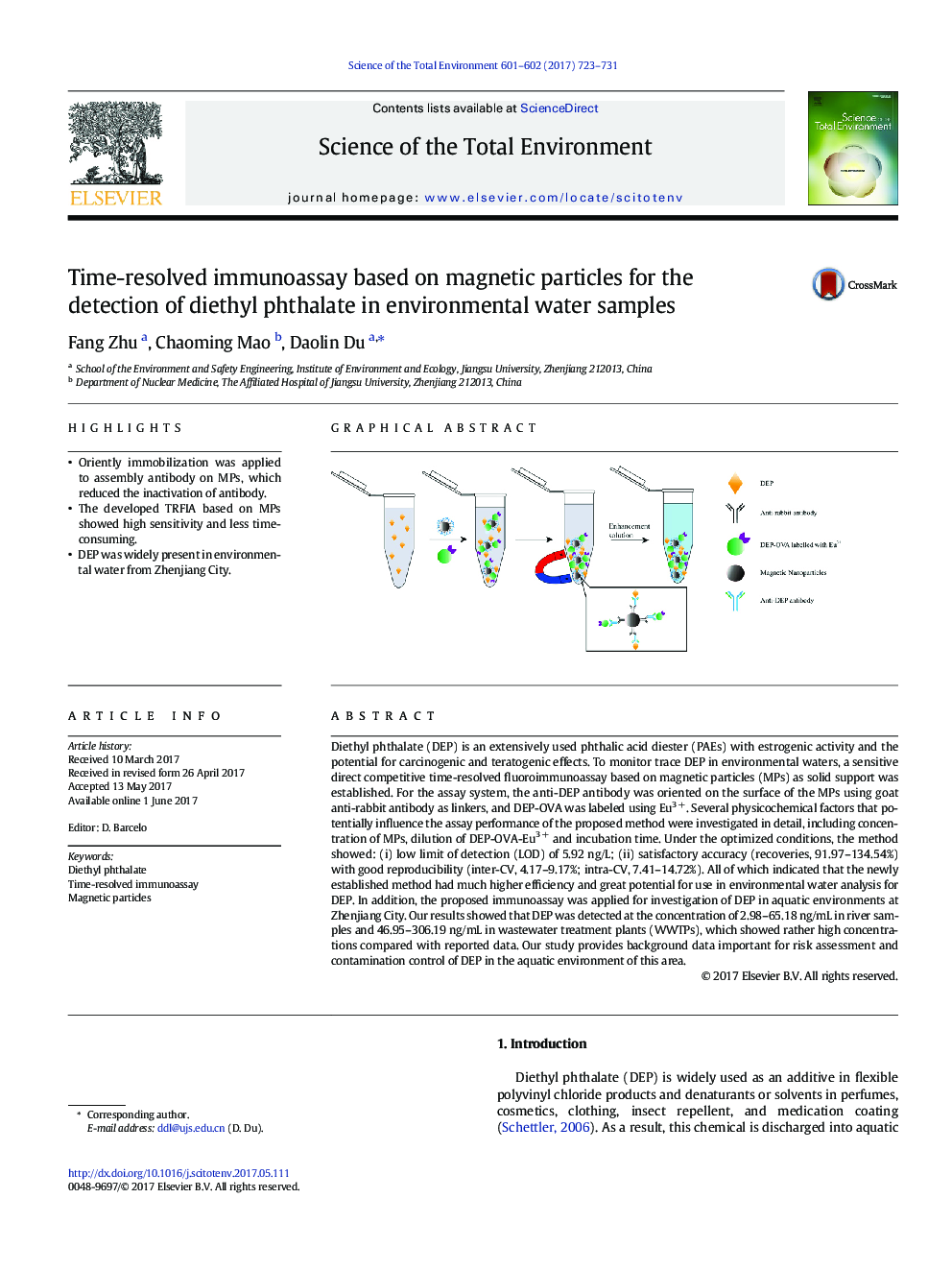| Article ID | Journal | Published Year | Pages | File Type |
|---|---|---|---|---|
| 5750428 | Science of The Total Environment | 2017 | 9 Pages |
â¢Oriently immobilization was applied to assembly antibody on MPs, which reduced the inactivation of antibody.â¢The developed TRFIA based on MPs showed high sensitivity and less time-consuming.â¢DEP was widely present in environmental water from Zhenjiang City.
Diethyl phthalate (DEP) is an extensively used phthalic acid diester (PAEs) with estrogenic activity and the potential for carcinogenic and teratogenic effects. To monitor trace DEP in environmental waters, a sensitive direct competitive time-resolved fluoroimmunoassay based on magnetic particles (MPs) as solid support was established. For the assay system, the anti-DEP antibody was oriented on the surface of the MPs using goat anti-rabbit antibody as linkers, and DEP-OVA was labeled using Eu3Â +. Several physicochemical factors that potentially influence the assay performance of the proposed method were investigated in detail, including concentration of MPs, dilution of DEP-OVA-Eu3Â + and incubation time. Under the optimized conditions, the method showed: (i) low limit of detection (LOD) of 5.92Â ng/L; (ii) satisfactory accuracy (recoveries, 91.97-134.54%) with good reproducibility (inter-CV, 4.17-9.17%; intra-CV, 7.41-14.72%). All of which indicated that the newly established method had much higher efficiency and great potential for use in environmental water analysis for DEP. In addition, the proposed immunoassay was applied for investigation of DEP in aquatic environments at Zhenjiang City. Our results showed that DEP was detected at the concentration of 2.98-65.18Â ng/mL in river samples and 46.95-306.19Â ng/mL in wastewater treatment plants (WWTPs), which showed rather high concentrations compared with reported data. Our study provides background data important for risk assessment and contamination control of DEP in the aquatic environment of this area.
Graphical abstractDownload high-res image (188KB)Download full-size image
